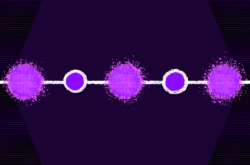Parallels is Softube’s synthesizer that fuses immaculate vintage sounds with cutting-edge wave scanning technology.
Its sound captured the attention of an array of artists including Brian Transeau (a.k.a. BT), a trance / IDM pioneer and veteran film composer. Adoring the synth for its unique approach to synthesis, BT created 30 custom presets for Parallels, which can be browsed and downloaded via its Preset Collection feature:

Use the search bar and tags to easily navigate an expansive collection of presets
BT’s presets demonstrate the timbral diversity Parallels offers, showcasing its ability to create evocative ambient textures in particular. Let’s take a listen to a few of his sounds:
One Chord Cue:
Icicles:
Blue Dreams:
How does BT devise these captivating soundscapes? Below, the acclaimed producer shares three tips that shed light on his approach to crafting original presets.
Don’t have Parallels? Try it for free on Rent-to-Own.
1. Start with a blank slate
For BT, the musical end goal of a preset has a large influence on how he gets started. “For example, I’d approach a complex pulsar train granular gesture in command line very differently to how I approach making a subtractive analog bass sound,” he explains.
That said, being able to freely experiment with a synth’s essential components seems to be crucial for him when it comes to designing his own sound. “The first thing I’m looking for in any synth is its inherent characteristics and peculiarities,” he notes. “Making presets for me always starts with an Init patch.”

Parallels’ default patch
2. Capitalize on the synth’s strengths
Every software synth has its unique set of strengths, and discovering these early on can help take your presets to new heights. BT encourages “letting a synth’s design naturally guide [a user] towards what it excels at.” After testing out all of the modulation sources, oscillators, and effect types that Parallels laid out in front of him, BT realized that the synth had a phenomenal reverb. “In a rare case, when I find an effect that has a unique character, I’ll incorporate it into lots of my patches. I love the reverb in this synth, so that was the case here.” Parallels’ lush reverb shaped many of BT’s presets, bringing them to life by introducing an ethereal spaciousness.
 On many of his presets, BT modulates the reverb to create an evolving sense of space
On many of his presets, BT modulates the reverb to create an evolving sense of space
3. Save the effects for last
Despite his enthusiasm for Parallels’ reverb, BT typically saves adding effects until the end of the process. “Usually I explore OSCs and filters first and keep effects muted until I have a patch that sounds great without them,” he explains. “Lots of presets in synths are actually terrible (in my humble opinion), but slathered with effects or overly complex arps – they sound cool, but are useless. I want to make sounds that can be used in anything, so I start by making a great patch that stands on its own without a lot of dressing up.”

Parallels offers five effects, spanning distortion, chorus, flanger, delay, and reverb
Do you have any tips of your own for creating custom synth presets? Let us know in the comments below.
Interested in giving BT’s presets a try? Rent-to-Own Parallels on Splice for $9.99/mo.
June 18, 2019



